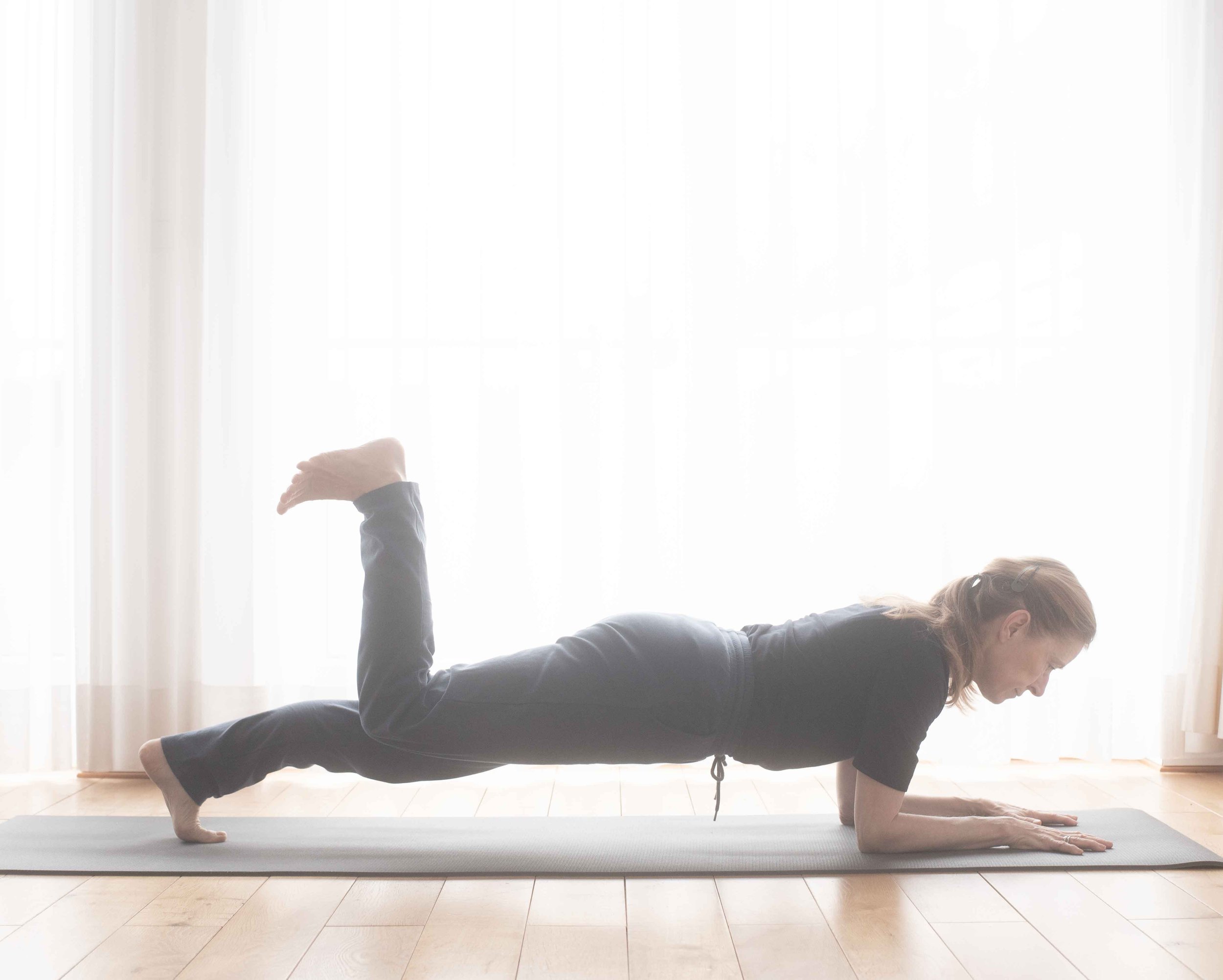Plank exercises can easily be incorporated into the sun salutations. It is a good idea to insert strength exercises before or after chaturanga dandasana.
Ultimately, chaturanga dandasana is a plank position.
The exercises are again taken from Sean Vigue's book '30 days of planks'.
In today's post, I present six more plank variations.
1st exercise:
Support yourself on your elbows. The body remains straight. Then bend your leg. Then change sides.
2nd exercise:
From a classic plank position with outstretched arms, first place the forearm of one arm on the floor, then the other. Then return to the classic position.
3rd exercise:
The hand touches the wrist of one arm. Then switch again.
4th exercise: The right hand touches the shoulder of the left side. Then switch again. This exercise was also recommended to me in the gym and becomes easier if you move your legs further apart. This makes it easier to balance.
5th exercise:
This is a side plank that I really like. It is a preparation for the 3rd Ashtanga Yoga series. The author also recommends changing sides quickly here. Since you are in a classic plank position as a transition, you can also add a push-up.
6th exercise:
One leg is moved to the side and then back again. The change follows immediately.
If you repeat the exercises up to 20 times, you will know what you have done.
These are just suggestions. It's best to pick out three favorite positions. If these get boring, try other variations.
Typical mistakes:
- When I looked at the pictures, I realized that the shoulders were not directly over the wrists. I was able to correct that.
- I also realized that my body wasn't really straight. You have to tighten your abdominal muscles to keep your body straight.
Have fun practicing.



























